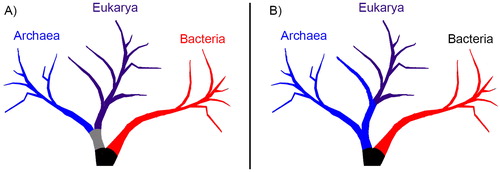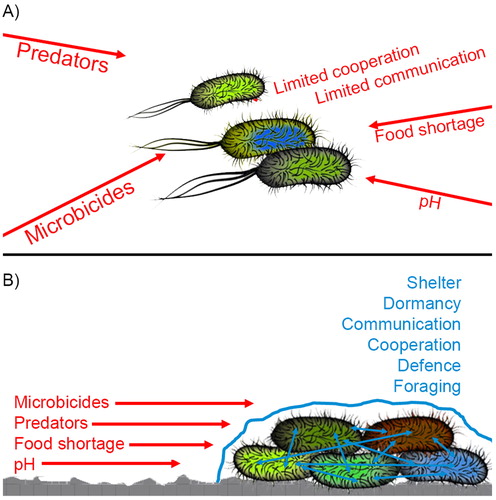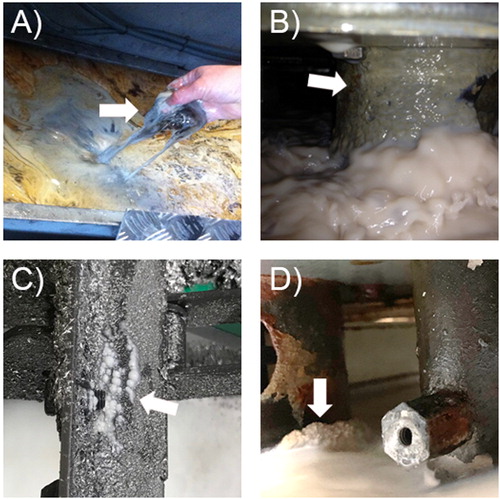Figures & data
Figure 1. Microorganisms are highly diverse organisms originating from all domains of life—Archaea, Eukarya, and Bacteria—plus viruses (not shown). These three domains differ in cellular construction, biochemistry, and genetics. (A)The three-domain model postulates that Eukarya and Archaea shared a common ancestor, whereas (B) the two-domain model claims that Eukarya actually descends from Archaea. It remains unclear which model is correct.

Figure 2. Some bacteria live as solitary and planktonic organisms, at least for a while. However, (A) this lifestyle has disadvantages and (B) the majority seeks refuge on surfaces, forming biofilms. This lifestyle confers many advantages on their inhabitants protecting them from the environment. Biofilms represent a much higher level of organization than single cells do.

Figure 3. Biofilms in MWF systems may vary in size and maturity. (A) Very young biofilms are easily removable, whereas (B) mature ones offer a lot of resistance to cleaning agents. (C), (D) Molds like to settle in places outside the waterline, and the surfaces covered may be very small at the beginning but offer them a chance to distribute all over, using spores as transportation devices.



